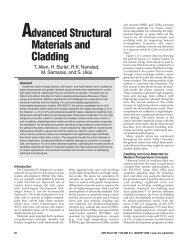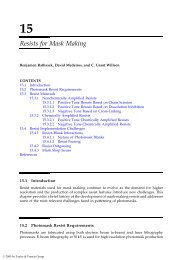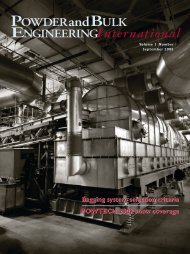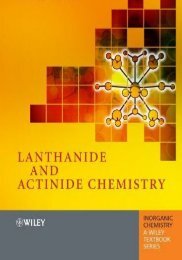Modeling of Biogas Reactors
Modeling of Biogas Reactors
Modeling of Biogas Reactors
You also want an ePaper? Increase the reach of your titles
YUMPU automatically turns print PDFs into web optimized ePapers that Google loves.
190 6 <strong>Modeling</strong> <strong>of</strong> <strong>Biogas</strong> <strong>Reactors</strong><br />
6.4.2.2 Mathematical <strong>Modeling</strong><br />
The structure <strong>of</strong> the mathematical models is shown in Figure 6.28. The mass balance<br />
<strong>of</strong> one module (i), including the interaction with an upper (i+1) and a lower<br />
module (i–1), leads to Eq. 26.<br />
V i<br />
dSS i<br />
dt<br />
= V · exchange,i–1(SS i –1–SS i)+V · exchange,i (SS ic1–SS i)<br />
+V · feed(SS i–1–SS i) – M · sedi,i–1 +M · sedi,i +M · prod<br />
V i SS i<br />
n<br />
� V k ·SS k<br />
kp1<br />
In this equation V i denotes the volume <strong>of</strong> a module, SS i the concentration <strong>of</strong> suspended<br />
solids, V · feed, the volumetric feed rate <strong>of</strong> the reactor, and M · sedi,i the sedimenting<br />
mass flow between the modules. The produced biomass M · prod according to the<br />
growth <strong>of</strong> organisms could be calculated according to the TOC consumed (Eq. 27).<br />
M · prod = 0.1·V · feed(TOC in – TOC out) (27)<br />
The volumetric exchange flow V · exchange,i is calculated with Eq. 28 on the basis <strong>of</strong><br />
measurements in Figure 6.26.<br />
Fig. 6.28 Structure <strong>of</strong> the mathematical<br />
model compared to two modules <strong>of</strong> the<br />
BTR.<br />
(26)






